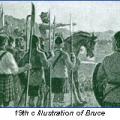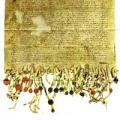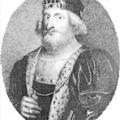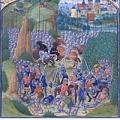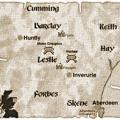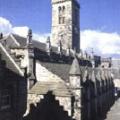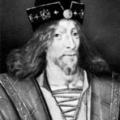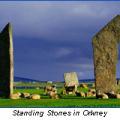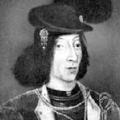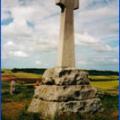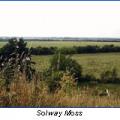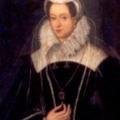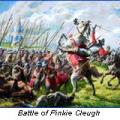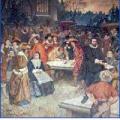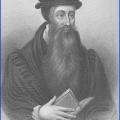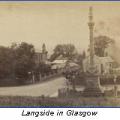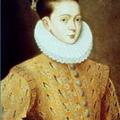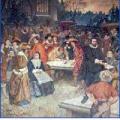Categories
Most Liked
Posted on July 17, 2013
by Amanda Moffet
by Amanda Moffet
Posted on May 12, 2013
by Chas Mac Donald
by Chas Mac Donald
Posted on August 29, 2013
by Amanda Moffet
by Amanda Moffet
Posted on February 6, 2013 by Donald | 6 views | comments
During the Wars of Independence, Philip de Mowbray agreed to surrender Stirling Castle if not assisted by England. Edward II therefore came across the border and by the time he left Edinburgh for Falkirk on the 22 June, he had amassed an army of sixteen thousand infantry and two and a half thousand ...
Posted on February 6, 2013 by Donald | 3 views | comments
Before Pope John XXII, Scotland had been recognised as an independent nation by the papacy. Pope John preferred Edward II’s version of who was ruler of Scotland however, and in 1319 he accused four Scottish bishops of rebellion and summoned them to answer to him.
Robert I had been King of Scotland ...
Posted on February 6, 2013 by Donald | 0 views | comments
In 1332 during an Anglo-Scots peace, Edward Balliol sailed with eighty-eight ships from the Humber to Fife and fought his way to Scone. His father John had abdicated in 1296 and Edward, claiming his family as still the true royal line, had himself crowned King of Scotland.
David II’s claim had the ...
Posted on February 6, 2013 by Donald | 6 views | 1 comments
The Battle of Otterburn is remembered as the fight where ‘a dead man won the field’.
A Scottish attack was made in Northumberland on Henry Percy and his estates, led by James Douglas, 2nd Earl of Douglas, on the 5 August 1388. During the fighting, Douglas was very badly wounded.
He told his office...
Posted on February 6, 2013 by Donald | 2 views | comments
This battle, regarded by many today as the conflict between Highlanders and Lowlanders which killed the expansion of Gaelic influence, was one of the most brutal in Scottish history, becoming known as ‘Red Harlaw’.
While James I was growing up in English jails, Donald, Lord of the Isles made it his...
Posted on February 6, 2013 by Donald | 0 views | comments
St Andrews University is first mentioned in documents of 1410, but its birth is usually assigned to the charter given to Bishop Henry Wardlaw in 1412, endorsed the following year by Pope Benedict XIII.
This was Scotland’s first university and had Warlaw as its Chancellor, while Laurence of Lindores ...
Posted on February 6, 2013 by Donald | 1 views | comments
In 1424, when James I returned from eighteen years imprisonment in England, he set about dealing with those who declined to aid his release from prison earlier and curbing the power of Scotland’s nobles.
His continual law-making added to the number of enemies he acquired for himself.
The Earl of At...
Posted on February 6, 2013 by Donald | 4 views | comments
For six centuries the Orkney and Shetland Islands remained under Norwegian sovereignty, geographically central in a sea-faring Scandinavian civilisation which reached across the Atlantic.
The earldom of the islands was of great Norwegian importance. In the fifteenth century however, Norway had fall...
Posted on February 6, 2013 by Donald | 4 views | comments
James III’s policies infuriated many noble families, whilst drawing closer to him many more.
His unhappy opponents won to their side the King’s son, fifteen year old Prince James, and made it known that they intended to install him as monarch. This was the motivation behind the battle on 11 June at ...
Posted on February 6, 2013 by Donald | 3 views | comments
Flodden was a disastrous and unnecessary confrontation for Scotland. James IV of Scotland was married to the sister of England’s King Henry VIII and a treaty of friendship existed between their countries.
The auld alliance between Scotland and France had been recently renewed. There had been Englis...
Posted on February 6, 2013 by Donald | 1 views | comments
Following the success against the English at Haddon Rig in the August, James V gathered an army of ten thousand and sent them, under the command of Oliver Sinclair of Pitcairns, to push as far into England as they could.
Their advance was met at Solway Moss by Sir Thomas Wharton and his three tho...
Posted on February 6, 2013 by Donald | 1 views | comments
Born on 8 December 1542, Mary’s life was complicated from the first week when her father, James V, died and made her Queen when she was six days old.
With James Hamilton, 2nd Earl of Arran, as Governor, Scotland was achieving closer ties with England. Queen Mary was betrothed, in 1543, to Edward,...
Posted on February 6, 2013 by Donald | 2 views | comments
The Battle of Pinkie, on the banks of the River Esk on 10 September 1547, was another catastrophic waste of life encouraged by lack of discipline and weak command.
The Duke of Somerset brought his troops, cavalry and guns to the area, with naval support for his sixteen thousand men having to make...
Posted on February 6, 2013 by Donald | 0 views | comments
A covenant is a contract between God and the people.
In 1557 a group of Protestant nobles opposed to Mary marrying the Roman Catholic Dauphin of France, signed a covenant to state that they would promote the ‘blessed work of God and his Congregation against the Congregation of Satan’, the former...
Posted on February 6, 2013 by Donald | 0 views | comments
The most influential person of the Scottish Reformation, John Knox, was first ordained as a Catholic priest.
Knox spent time in the company of George Wishart before he was arrested and burned for heresy in March 1546 by Cardinal Beaton. Knox joined the Reformers, who murdered Cardinal Beaton the...
Posted on February 6, 2013 by Donald | 0 views | comments
Queen Mary’s reign was in tatters when she escaped from Loch Leven Castle on 2 May 1568. A week later she had gathered six thousand men willing to fight for her as she headed for the safety of her strong Dumbarton Castle, which Lord Fleming was holding for her.
Lord James Stewart, her half-brothe...
Posted on February 6, 2013 by Donald | 1 views | comments
In 1581, Esmé Stewart was created Earl of Lennox.
He was in support of Queen Mary and acknowledged Catholic concerns at a time when the Reformation was well established in Scotland. The Presbyterians believed Lennox to be an agent for the Counter-Reformation and a Catholic spy.
Although both the ...
Posted on February 6, 2013 by Donald | 0 views | comments
Charles I’s views of himself, theology and politics became increasingly contradictory to the beliefs of the Presbyterians. Charles tried to bring together the laws and churches of Scotland and England, with all roads leading to himself.
In 1637 he produced the Book of Common Prayer, written witho...
Featured Articles
Most Discussed
Posted on July 16, 2013
by Amanda Moffet
by Amanda Moffet
Posted on February 6, 2013
by Donald
by Donald
Posted on July 17, 2013
by Amanda Moffet
by Amanda Moffet


 View More
View More View Less
View Less